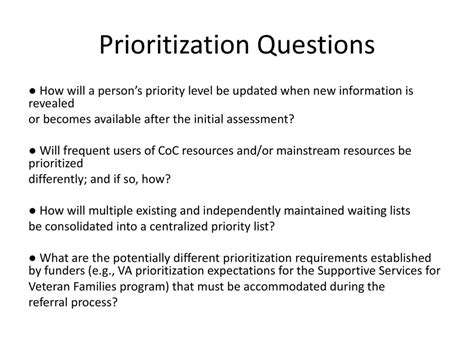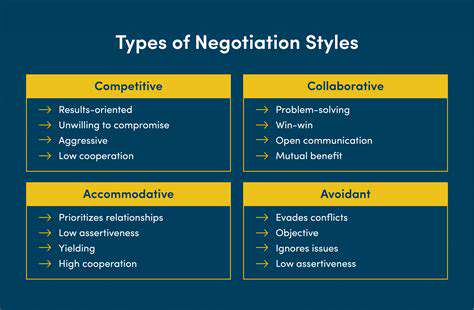Tips for Managing Time During the SAT
Adapting to Different Question Types
Reading comprehension questions often fall into predictable categories: main idea, vocabulary in context, inference. Recognizing these allows students to apply practiced strategies instantly rather than starting from scratch each time. This pattern recognition becomes the secret weapon against the clock.
Reviewing and Refining Your Strategy
Post-test analysis separates productive practice from mere repetition. Creating a time log tracking minutes spent per question type exposes hidden inefficiencies. Maybe transition words in Writing sections consistently cause delays, indicating a specific area needing study. This forensic approach transforms practice into targeted improvement.
Prioritizing Question Types and Difficulty Levels

Prioritizing Question Types for Effective Learning
Question categorization changes everything. Bloom's Taxonomy isn't just educational theory - it's a roadmap for SAT success. The test deliberately includes questions at different cognitive levels, from simple recall (knowledge) to complex analysis (evaluation). Recognizing these distinctions allows strategic preparation.
Types of Questions that Promote Deeper Understanding
Higher-order questions - those requiring analysis, synthesis, and evaluation - often appear in SAT Reading and Writing. Students must practice unpacking these layered questions, identifying exactly what's being asked before attempting answers. This meta-cognitive approach prevents wasted time on misread prompts.
The Importance of Recall Questions
While the SAT emphasizes critical thinking, foundational knowledge remains essential. Grammar rules, mathematical formulas, and vocabulary form the building blocks for more complex questions. Quick recall of these basics creates time reserves for challenging problems.
Application and Analysis Questions for Enhanced Skill Development
These question types dominate SAT Math. The shift from solve for x to interpret this real-world scenario catches many students unprepared. Practice should focus on translating word problems into mathematical expressions - a skill requiring repeated application across diverse contexts.
Evaluation and Synthesis Questions: Higher-Order Thinking
SAT Reading's paired passages epitomize synthesis questions. Students must compare authors' arguments, evaluating evidence and rhetorical strategies. Developing this skill requires active reading - annotating, summarizing, and questioning texts during practice.
Questioning Strategies for Effective Learning Environments
The best test-takers become question architects, learning to predict what a question is really assessing. This skill develops through creating practice questions, forcing students to think like test makers. Study groups can particularly benefit from this reciprocal questioning approach.
Practicing Strategic Skipping and Returning

Strategic Skipping Techniques
The art of strategic skipping separates average scores from exceptional ones. It's not about avoidance, but intelligent resource allocation. Students should practice identifying time sink questions - those that would consume disproportionate minutes for uncertain gain. Marking these for later review preserves time for more solvable problems.
Optimizing Your Skipping Routine
Effective skipping requires discipline. Set strict time limits per question (e.g., 1 minute for Math) and stick to them during practice. This trains the instinct to recognize when further effort yields diminishing returns. The goal isn't perfection, but optimal point accumulation.
Just as environmental factors affect focus, test-taking environment impacts time management. Practice under conditions mimicking the actual test - complete with distractions and strict timing - builds resilience against time pressure.
Optimizing Your Pace and Avoiding Rushing

Understanding Your Ideal Pace
Pacing mirrors business strategy - both require balancing speed with sustainability. The talk test works for both running and test-taking: if you're mentally gasping, you're pushing too hard. Practice should include sessions focused solely on maintaining steady, manageable pacing.
Importance of Varying Your Pace
Just as interval training improves athletic performance, alternating between timed drills and untimed analysis builds cognitive endurance. This varied approach prevents burnout while developing both speed and depth of understanding.
Avoiding Common Pace-Related Pitfalls
The false finish illusion - feeling you're ahead with time to spare - often leads to careless errors. Conversely, time anxiety creates rushed mistakes. Practice should include scenarios with both time surpluses and deficits to build adaptability.
Techniques for Maintaining a Consistent Pace
Physical anchors help regulate mental pace. Some students tap a foot rhythmically, others use breathing patterns. These somatic markers create consistency across different question types, preventing sections from feeling disjointed time-wise.


![Guide to Learning [Specific Writing Style, e.g., Technical Writing]](/static/images/32/2025-05/UtilizingEffectiveLearningTechniques.jpg)
![Best Resume Templates for Career Change [2025]](/static/images/32/2025-05/EmphasizingKeywordsandIndustry-SpecificLanguage.jpg)







